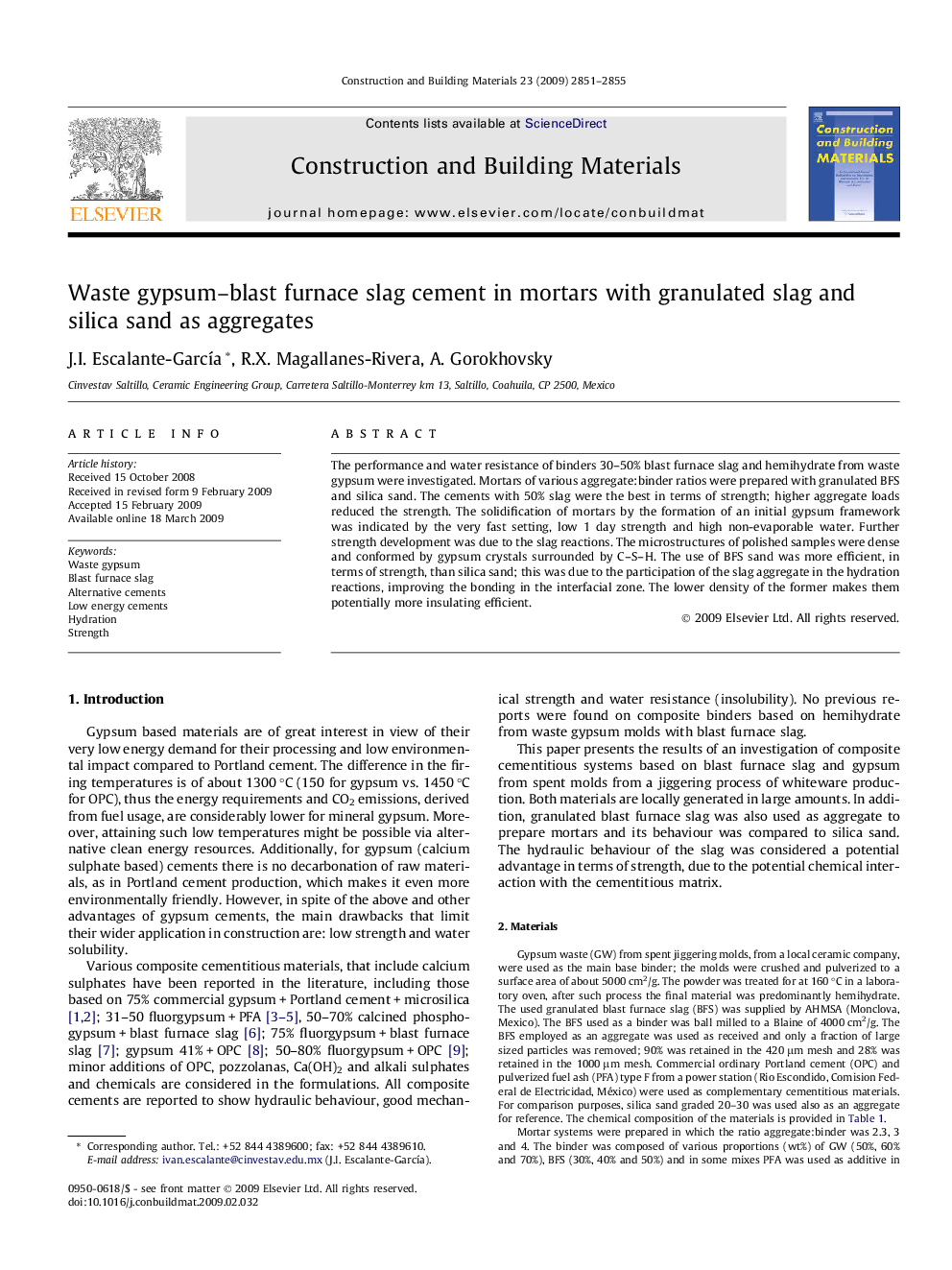| Article ID | Journal | Published Year | Pages | File Type |
|---|---|---|---|---|
| 260179 | Construction and Building Materials | 2009 | 5 Pages |
The performance and water resistance of binders 30–50% blast furnace slag and hemihydrate from waste gypsum were investigated. Mortars of various aggregate:binder ratios were prepared with granulated BFS and silica sand. The cements with 50% slag were the best in terms of strength; higher aggregate loads reduced the strength. The solidification of mortars by the formation of an initial gypsum framework was indicated by the very fast setting, low 1 day strength and high non-evaporable water. Further strength development was due to the slag reactions. The microstructures of polished samples were dense and conformed by gypsum crystals surrounded by C–S–H. The use of BFS sand was more efficient, in terms of strength, than silica sand; this was due to the participation of the slag aggregate in the hydration reactions, improving the bonding in the interfacial zone. The lower density of the former makes them potentially more insulating efficient.
